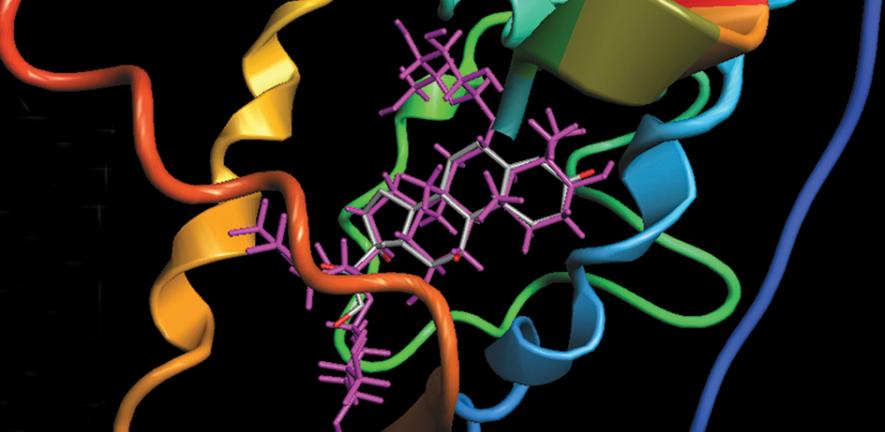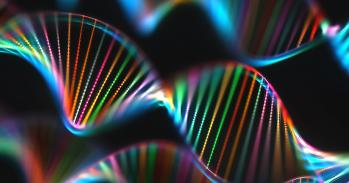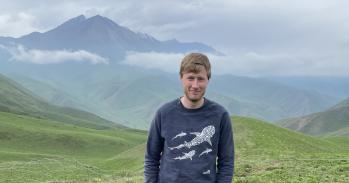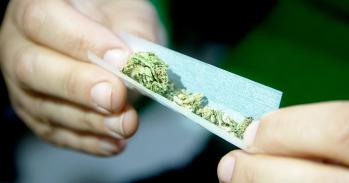
Research led by the Department of Pharmacology is discovering the drugs of tomorrow from traditional Chinese medicine.
Research led by the Department of Pharmacology is discovering the drugs of tomorrow from traditional Chinese medicine.
In these days of huge international pharmaceutical companies and modern high-powered methods of drug development, it is worth recalling how much we owe to compounds discovered in the natural world through folk medicine.
Professor Peter McNaughton, Head of the Department of Pharmacology
Almost every culture has its distinct herbal traditions, each with its indigenous plants and unique practices. But one premise unites them all – herbs have remarkable properties that make them potentially powerful medicines. In Britain, this rich history was given credence in 1511 by the Herbalists Charter of Henry the VIII, which stated that anyone ‘having knowledge and experience of the nature of herbs, roots and waters’ was allowed to provide care. In China, practitioners of traditional Chinese medicine (TCM) began to compile formulations in compendia more than 2000 years ago. Today, TCM is enjoying a revival, thanks to several international initiatives to validate the power of TCM as a preventive medicine and as a cure for chronic diseases.
Fascinated by the ground-breaking work in the 1990s of dermatologists and TCM practitioners using Chinese herbs in the treatment of steroid-resistant eczema, Dr Tai-Ping Fan embarked on a quest to transform the art of TCM into a rigorous evidence-based science of healthcare and well-being. Ten years on, his team at the University’s Department of Pharmacology is now working on an interdisciplinary programme to discover new medicines from plants.
The good and the evil of materia medica
An incredible 400,000 combinations of 10,000 plant and animal extracts plus minerals make up the formulations of TCM known today. Chinese doctors are guided by holistic principles and often prescribe a cocktail of materia medica (fufang) with the aim of promoting synergistic interactions among constituents yet minimising their adverse/toxic effects. In fact, such a practice of polypharmacy has now become a popular approach for modern-day drug formulations: some ‘All-in-One’ products for the relief of cold symptoms, for example, contain a mixture of paracetamol (to treat headache, shivers and pains), phenylephrine (blocked nose and sinuses) and guaifenesin (chesty coughs). Establishing which are the active ingredients and which are the toxins, and determining how they work, is key to the renaissance of TCM as a means of drug discovery.
Yin and Yang in ginseng
Dr Fan’s research has focused on the time-honoured herb ginseng (Panax), a commonly used nutraceutical (a food extract that has medicinal effects) and one of the most important components of TCM. Variously attributed with benefits such as improving alertness, inducing well-being and reducing pain, ginseng has been shown in recent times to aid wound healing and treat tumours. But, perplexingly, the plant seems to act both by promoting the growth of blood vessels (angiogenesis) in wounds and by inhibiting it in tumours. How can it accomplish such opposing activities?
Using pure molecules extracted from the plant, Dr Fan led an international team of researchers from Massachusetts Institute of Technology, Gaubius Laboratory in The Netherlands, Hong Kong Baptist University and the University of Cambridge to study this phenomenon. By determining ginseng’s chemical fingerprint (the chemical ‘signature’ of molecules that distinguishes one compound from another) and purifying its components, the team has reconstructed what is happening to the blood vessels at both the cellular and molecular level.
Not all ginseng is the same
One of the principal findings of the study is that not all types of ginseng are the same: the source is vitally important. A mass spectrometric compositional analysis of American, Chinese, Korean and Sanqi ginseng revealed distinct fingerprints, especially in the ratio between the two most prevalent constituents, the ‘sterol ginsenosides’ Rg1 and Rb1. Crucially, if the ginseng has Rg1 as the dominant constituent it promotes angiogenesis, and if Rb1 is dominant it exerts an opposing effect. For the first time, the ambiguity in the effects of ginseng on vascular pathophysiology had been explained by the specific make-up of each variety.
Working with Professor Ricky Wong at Hong Kong Baptist University, Dr Fan has taken his research a step further. Homing in on the molecular interactions happening inside the blood vessel cells, the research has confirmed precisely how ginseng works. Rg1 binds to a steroid receptor (glucocorticoid receptor), which then stimulates blood vessel growth by upregulating a growth factor; by contrast, Rb1 binds another type of steroid receptor (oestrogen receptor), which then inhibits blood vessel growth through a different pathway.
These discoveries highlight the potential benefits of the components of ginseng for drug development. They also raise important implications for TCM and regulations that standardise herbal therapy: incorrect identification and misuse of herbal species can result in severe consequences and extreme care must be taken that the right herbs are prescribed for the right condition.
Herbs for health
These new aspects of angiogenesis research are providing important clues for the development of novel drugs to treat diseases in which angiogenesis plays a role, including rheumatoid arthritis, heart disease, psoriasis, chronic wounds and cancer. Working closely with Dr Rik van Veen in the Department of Pharmacology, Dr Fan aims to discover herbal activities for the reversal of multi-drug resistance in cancer chemotherapy. A further collaboration is studying other herbs commonly used in TCM for the prevention and treatment of cardiovascular conditions such as hypertension and stroke (Salvia miltiorrhiza, or danshen), and gynaecological disorders such as irregular periods and endometriosis (Angelica sinensis, or dong guai). This project brings together expertise from many departments: Professor Steven Ley (Department of Chemistry), Dr Stephen Charnock-Jones (Department of Obstetrics and Gynaecology), Dr Bertie Göttgens (Department of Haematology), and Professor Kevin Brindle and Dr Richard Farndale (Department of Biochemistry).
Modernising Chinese medicine
The multifactorial nature of chronic diseases is one of the most significant problems in drug discovery today. Orally active Chinese medicine fufang represents a golden opportunity for drug discovery: each herb contains many active ingredients and is essentially an enormously complex chemical cocktail with medicinal properties that modern pharmaceuticals cannot yet reproduce. Internationally, drug discovery researchers are increasingly turning to TCM. One of the most ambitious of these projects was announced only recently: the ‘Herbalome Project’ at the Dalian Institute of Chemical Physics in China is embarking on a 15-year study using high-throughput screening, toxicity tests and clinical trials to identify the medicinal constituents of herbal preparations.
In Britain, Dr Fan has assembled a consortium of experts from the University of Cambridge, the Needham Research Institute in Cambridge, the Royal Botanic Gardens at Kew, Brunel University, Bradford University, the London School of Pharmacy, and Guy’s & St Thomas’ NHS Foundation Trust. In collaboration with Chinese government agencies, academic institutions and enterprise, the consortium aim to illuminate the science underpinning TCM theories and practice, and deliver solutions for new avenues of healthcare.
Cambridge is well placed to become an international centre for the systematic investigation and modernisation of Chinese medicine in the future. The drawing together of expertise and resources across the University and neighbouring institutions, and the formation of joint ventures with pharmaceutical and biotech companies, will ensure the power of modern science continues to unlock Nature’s biochemical secrets.
This work is licensed under a Creative Commons Licence. If you use this content on your site please link back to this page.





